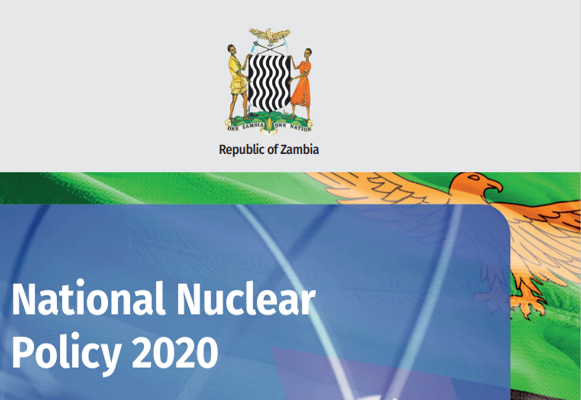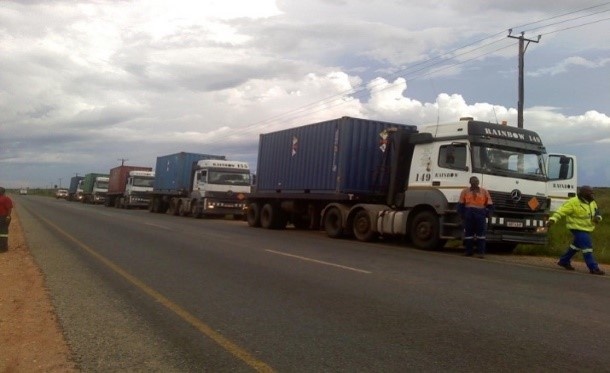Project MC 5.01 15B Supports the Implementation of the Nuclear Policy for Zambia 2020

.png) On 16 February 2021, ISTC and the Zambia Radiation Protection Board (RPA) convened a Virtual Meeting with legal experts to review the Zambia legal framework on Nuclear Safety, Security and Safeguards in view of the preparation of the country specific report under the EU Project MC 5.01 15B.
On 16 February 2021, ISTC and the Zambia Radiation Protection Board (RPA) convened a Virtual Meeting with legal experts to review the Zambia legal framework on Nuclear Safety, Security and Safeguards in view of the preparation of the country specific report under the EU Project MC 5.01 15B.
The meeting began with opening remarks by RPA Executive Director Dr. Boster Dearson Siwila, who noted that Zambia makes use of recommendations from various international partners, including the European Union, to update its legal and normative framework that provides protection for the public, workers, properties and the environment from the hazards arising from nuclear damage and the use of devices or materials capable of producing radiation. The PRA, being the national watchdog on safety and safeguards, pays particular attention to the specific objective of the EU-funded project, entitled Support to Southern African States in Nuclear Safety and Safeguards (Project MC 5.01 15B). Standing on the crossroads of Uranium ore transportation roads, Zambia is particularly interested in regional approach towards greater safety of transboundary movements of radioactive material.
Dr. Boster Dearson Siwila presented the blueprint on Nuclear Policy for Zambia 2020. It aims to provide a framework within which Zambia can use nuclear science and technology for peaceful purposes in various sectors such as industry, agriculture, energy, health, mining, education, and environment. The Nuclear Policy will support a diversified economy for sustainable development as envisioned in the Vision 2030 - Zambia’s long-term plan for development to achieve desirable socio-economic outcomes by 2030. Various ministries and statutory bodies identified as stakeholders shall ensure the implementation of the policy provisions. Not less than six existing pieces of legislation will be amended or repealed, while two new laws will be enacted: Nuclear Act to provide for development, coordination and implementation of the Nuclear programme in Zambia and the establishment of the Zambia Nuclear Agency; and Nuclear Safety and Radiation Protection Act to provide for the regulation and management of the peaceful use of nuclear and radioactive materials, including the setup of the Nuclear Safety and Radiation Protection Authority.
 Ms. Nsama Kwendeni, Head, Legal Department, Ministry of Health, noted that operators as well as state authorities are required to develop plans to limit the consequences of a radiological accident, comprising both safety and security events. With the multiplication of the actors in the nuclear safety field, the need for definition of their roles regarding the functioning of licensing, inspection and enforcement systems becomes even more acute. Furthermore, there is a lack of specific regulations for the physical protection of nuclear and other radioactive material and associated facilities and transport security, and for the security of nuclear and other radioactive material out of regulatory control.
Ms. Nsama Kwendeni, Head, Legal Department, Ministry of Health, noted that operators as well as state authorities are required to develop plans to limit the consequences of a radiological accident, comprising both safety and security events. With the multiplication of the actors in the nuclear safety field, the need for definition of their roles regarding the functioning of licensing, inspection and enforcement systems becomes even more acute. Furthermore, there is a lack of specific regulations for the physical protection of nuclear and other radioactive material and associated facilities and transport security, and for the security of nuclear and other radioactive material out of regulatory control.
The presenter adopted a critical view while scrutinizing the existing normative gaps in relation to the transportation of Uranium Ore Concentrates (UOC). The Mines and Minerals Development (Prospecting, Mining and Milling of Uranium Ores and Other Radioactive Mineral Ores) Regulation (2008) plays the role of a statutory instrument (Number 85 of 2008) based on the Mines and Minerals Development Act. The objectives of the statutory instrument are to regulate the mining industry in the exploration, mining, processing, storage, transportation, acquisition and exportation of uranium and other radioactive minerals in accordance with the Act, and to enhance radiological safety, security, and environment protection. The presentation substantiated the conclusion that a comprehensive legislation on the transportation of UOCs should ultimately provide for a nuclear security mechanism that is efficient to fully align to the protection of UOC during transportation and unauthorized removal along the movement.
Melody Mwewa, the RPA Nuclear and Radiation Safety Manager in charge of international cooperation made a separate presentation on the experience gained through the monthly transportation of UOC from Kayelekera uranium mine in northern Malawi via Lusaka to Walvis bay in Namibia that lasted from 2009 until 2014.
Misozi Banda Kapeya, Legal Manager, RPA presented Zambia’s Legal Framework on Nuclear Safety, Security and Safeguards, including the Ionising Radiation Protection Act No. 16 of 2005, and its 2011 Amendment. At the same time Statutory Instrument No. 98 of 2011 placed responsibility on the licensee to ensure that the public, environment and worker are not exposed to harmful radiation during transportation of radioactive material. Its provisions also showed that where Zambia had no national laws to regulate radioactive material, international standards were relied on.
Dr. Timur Zhantikin, Director of Kazakhstan Nuclear Power Plant, LLP, and lead consultant to the Project, shared Kazakhstani experience with crafting and implementing normative acts on safety and security of uranium nuclear transportation, whereby the Regulator had to share responsibilities with the Ministry of Transport and other relevant state agencies. The intra-agency coordination and division of roles and responsibilities is undoubtedly the future for Zambia on its way to implement the national Nuclear Policy 2020.

